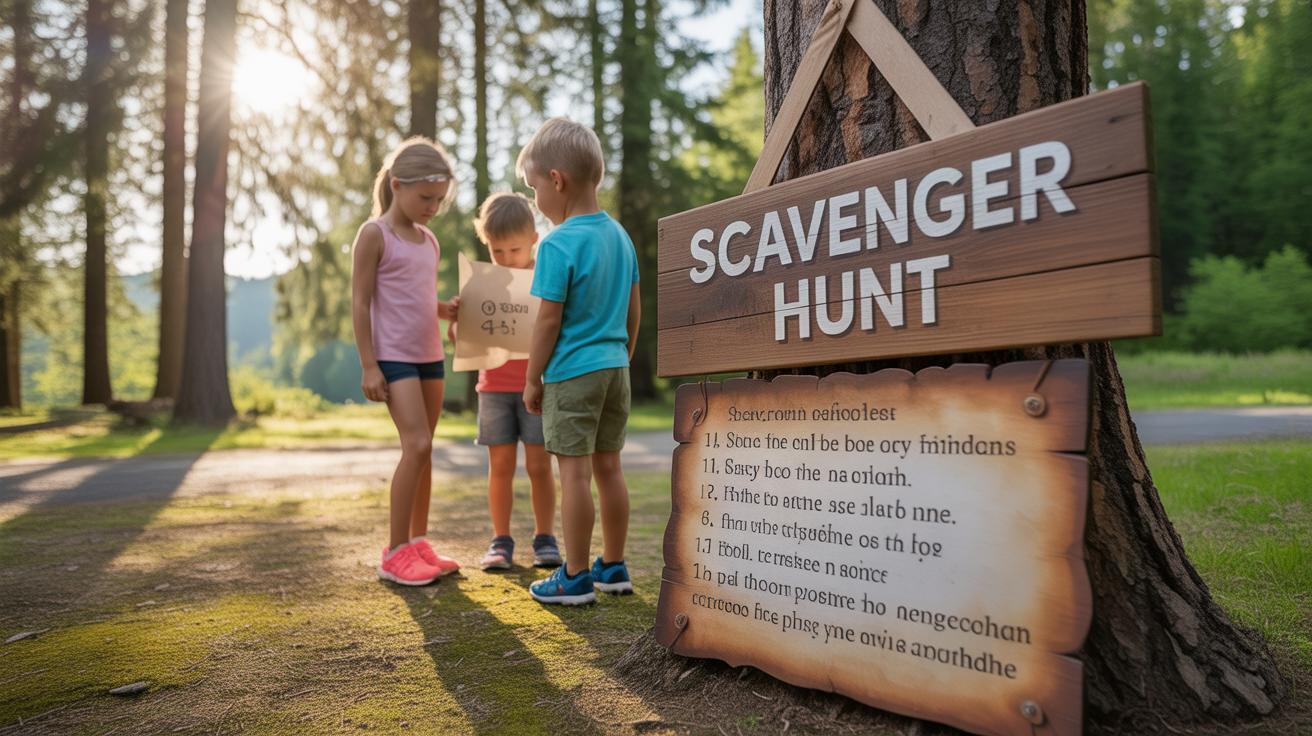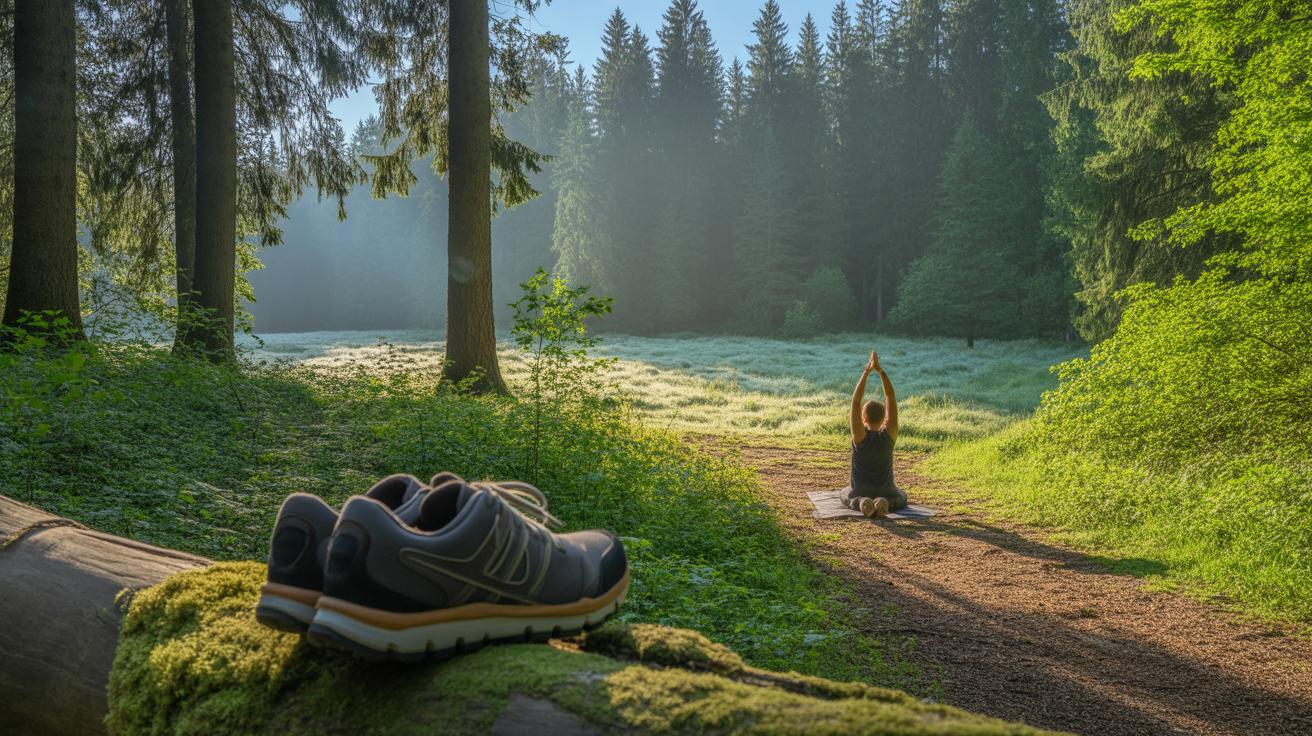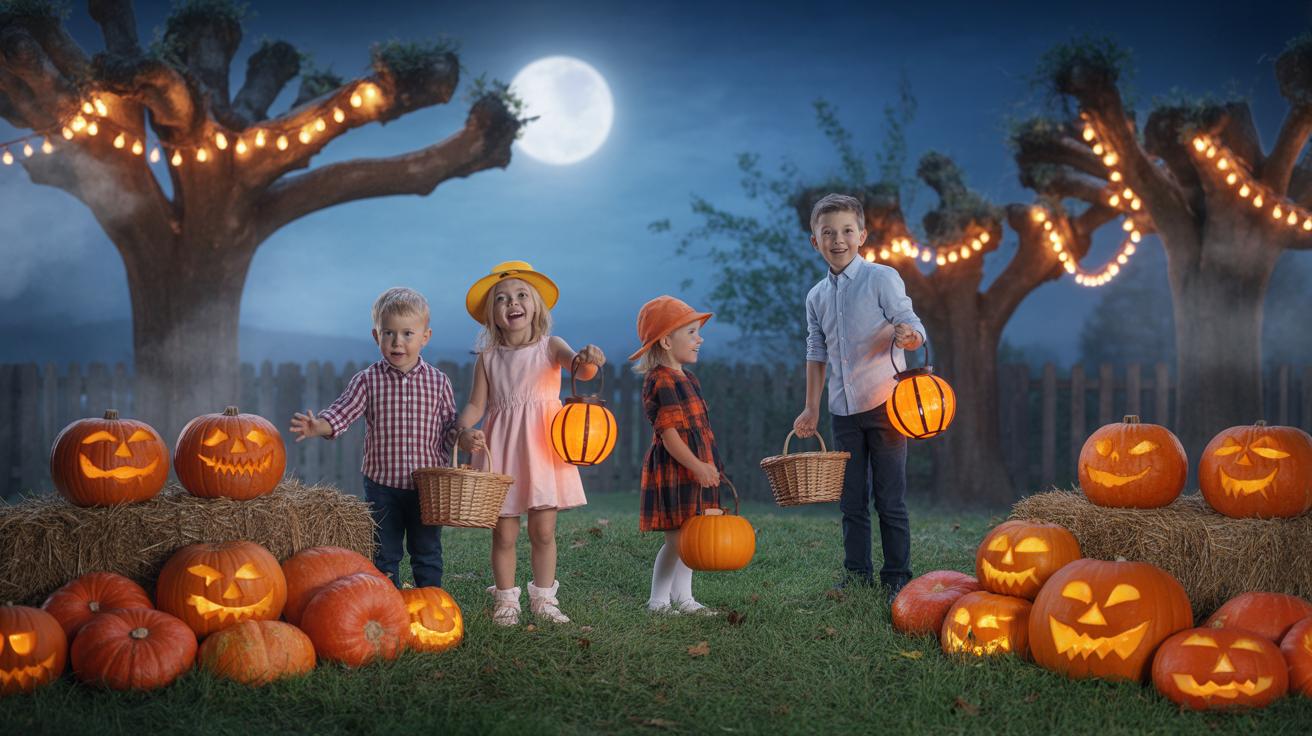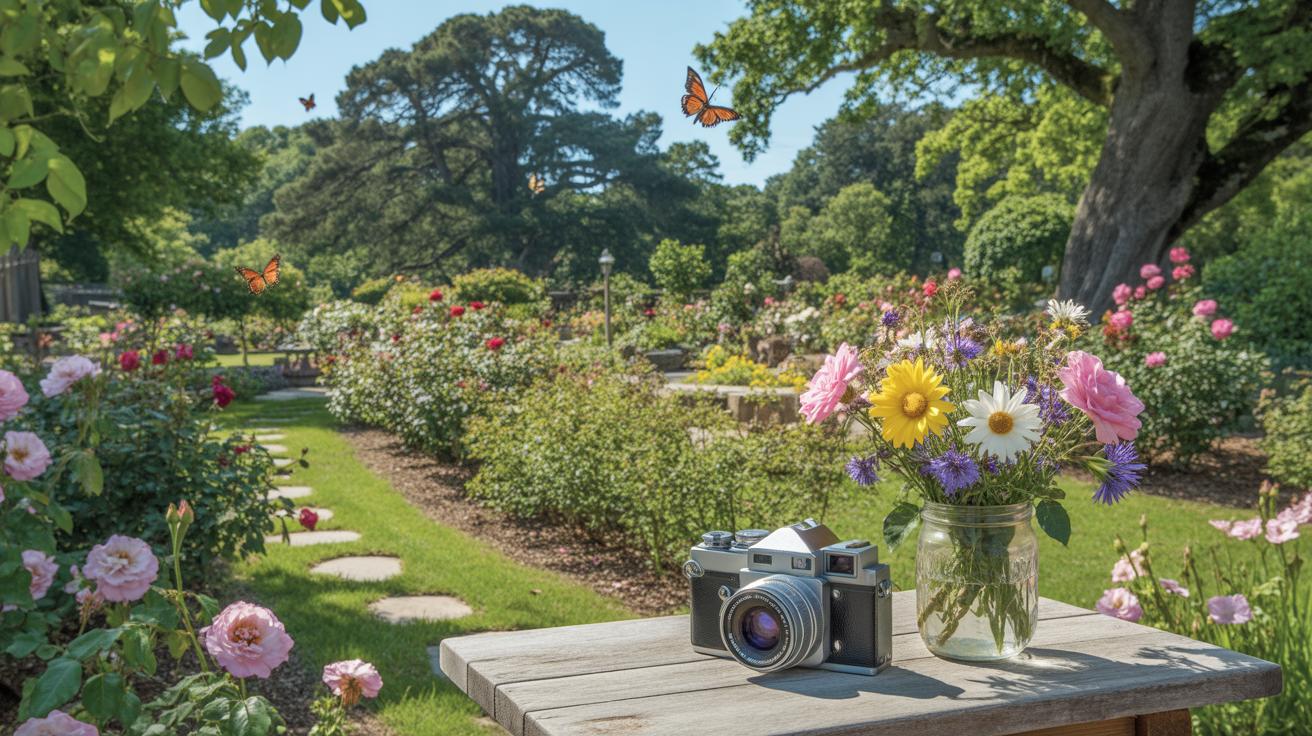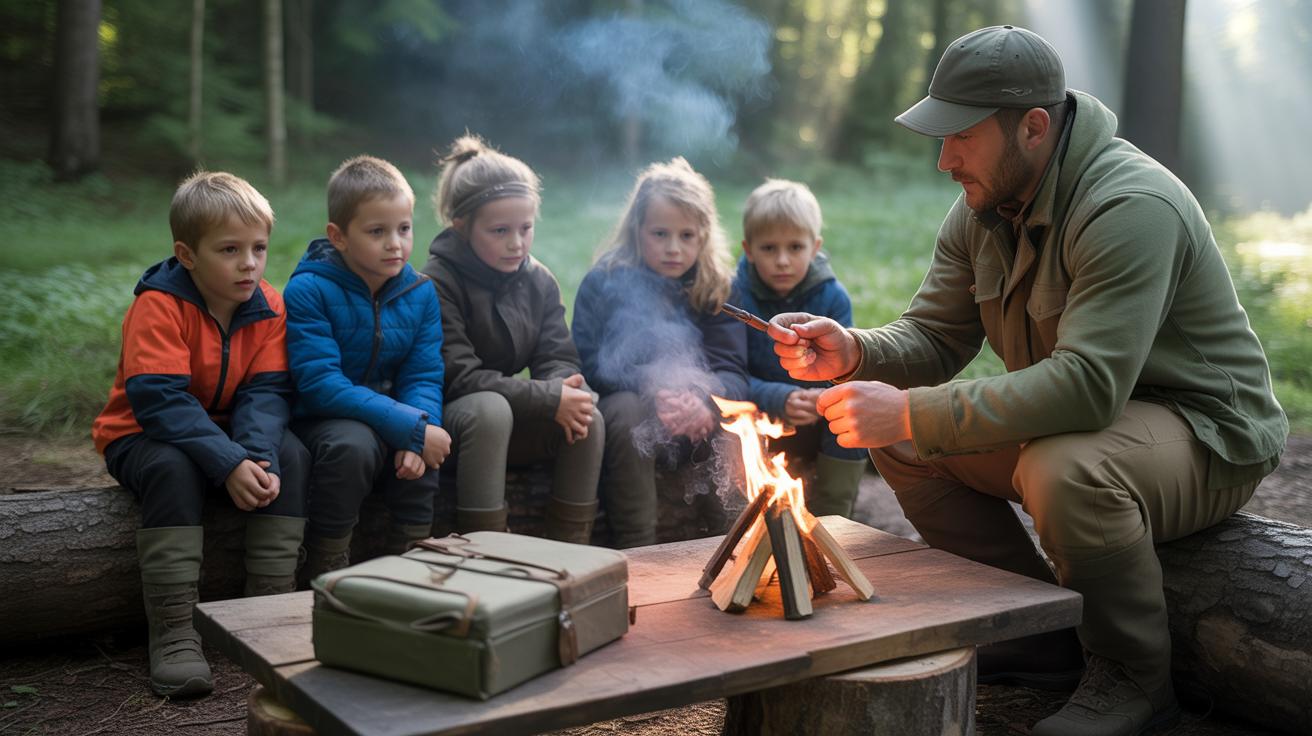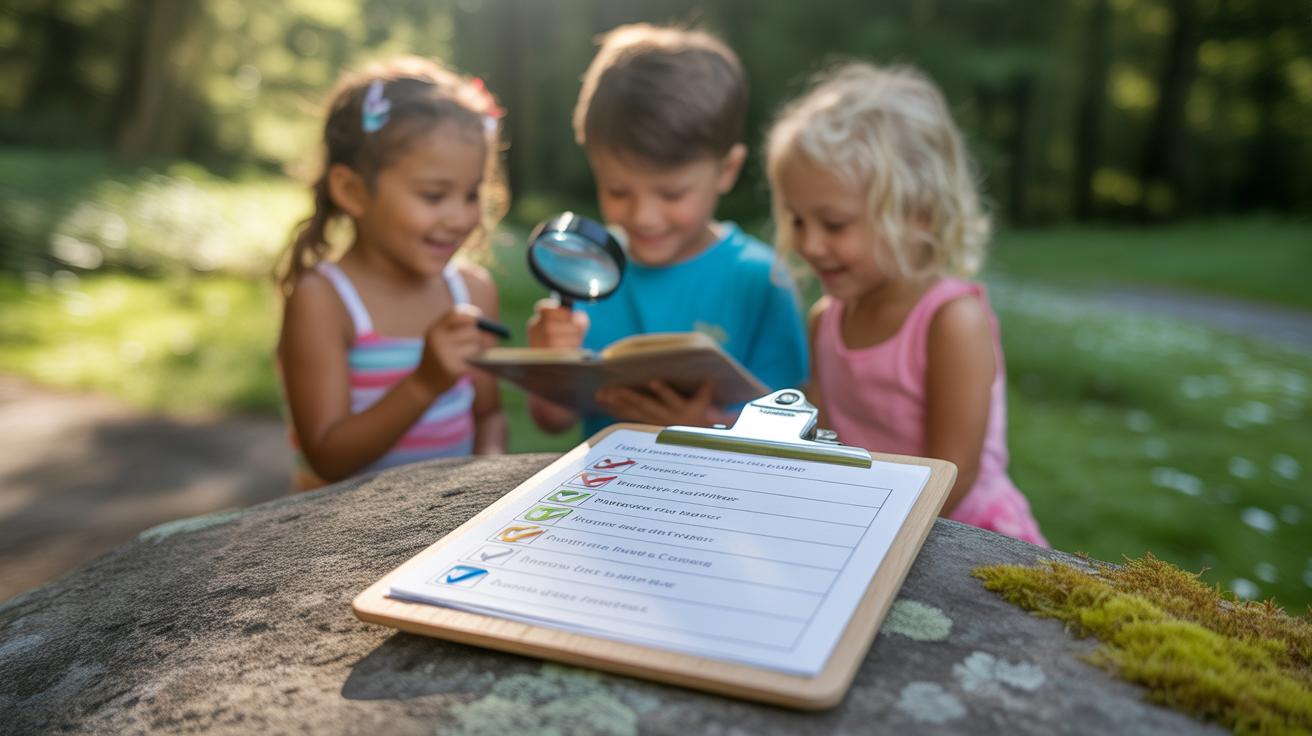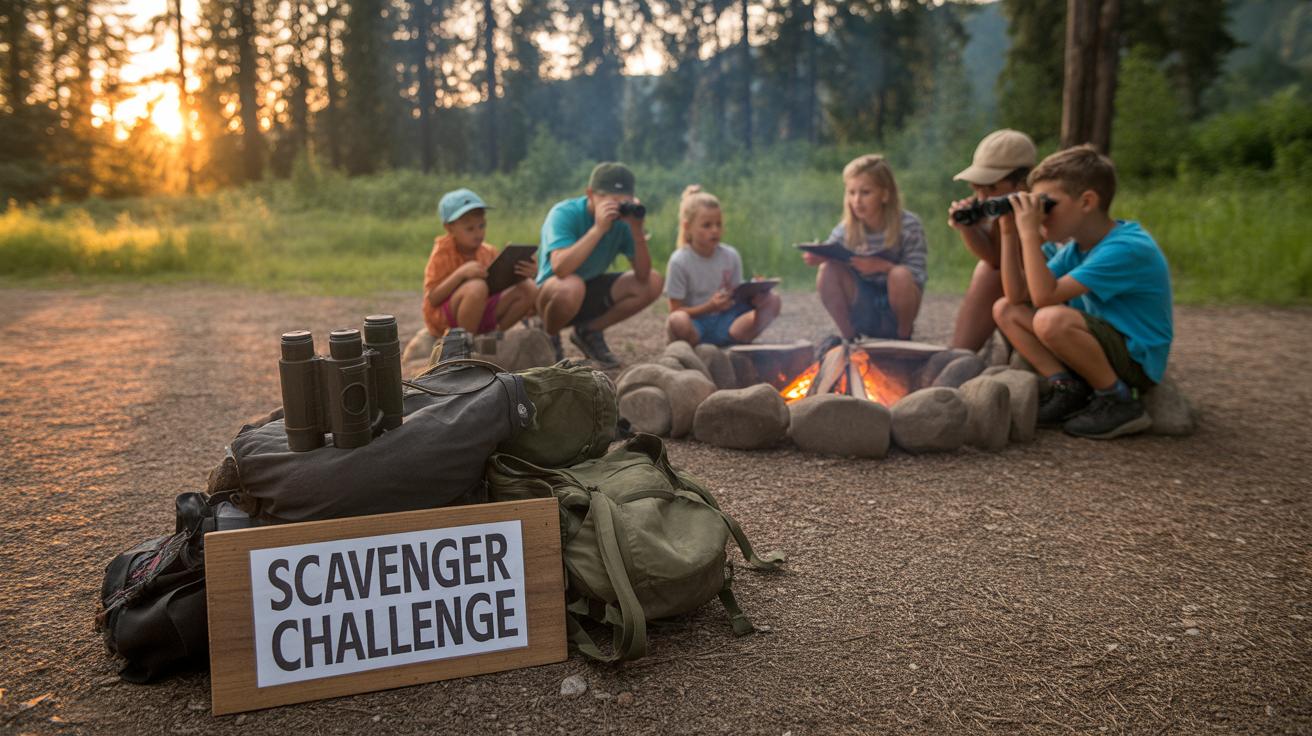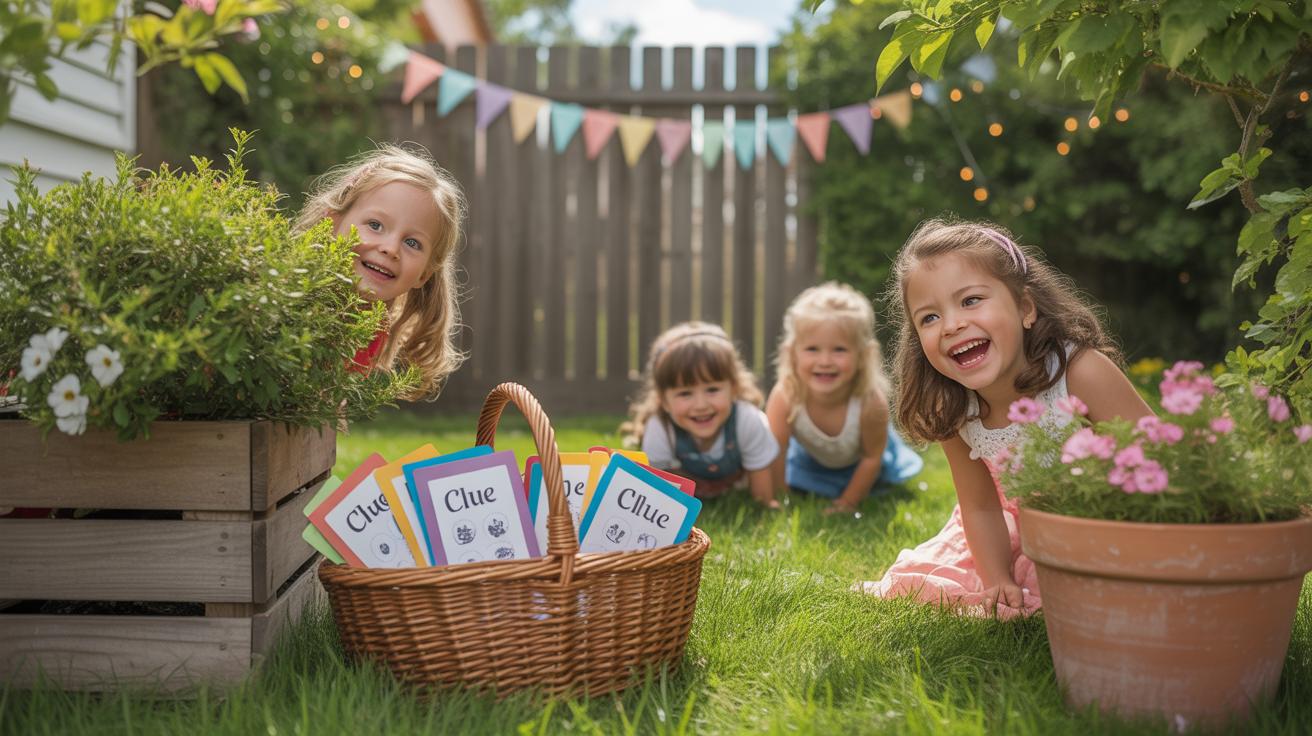Introduction
Forest clue scavenger hunts for kids outdoor offer a great way to combine adventure with learning. These activities encourage children to explore nature while developing problem-solving skills. Playing scavenger hunts in a forest setting makes the game more exciting and fuels children’s curiosity about the environment around them. You can create clues that highlight natural features, making each hunt a journey of discovery.
This article explores various creative forest clue scavenger hunt ideas designed with kids in mind. You will find practical suggestions to design hunts that are both fun and educational. We also cover tips that help ensure your outdoor scavenger hunt runs smoothly and keeps the children engaged throughout the adventure.
Understanding Scavenger Hunts and Their Benefits
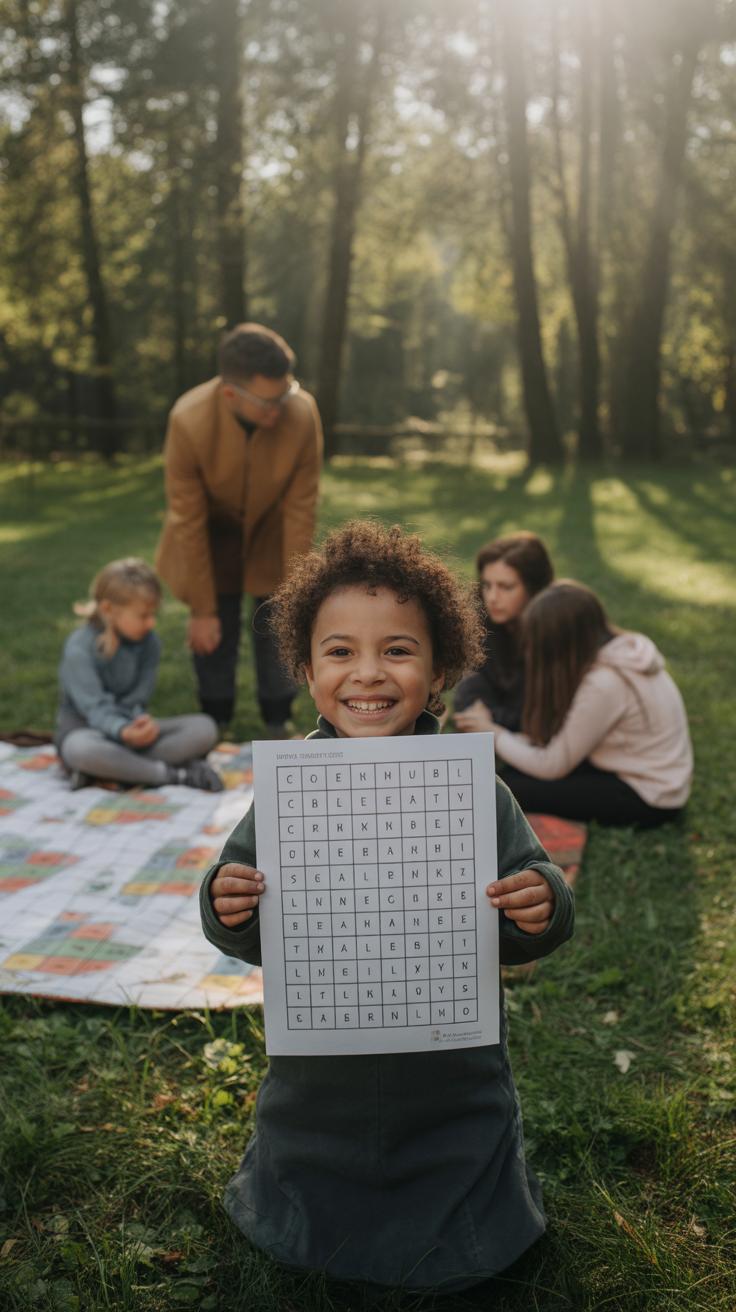
What Is a Scavenger Hunt
A scavenger hunt is a game where kids search for specific items or follow clues to find hidden objects. Usually, there’s a list of things to find—sometimes straightforward like “a pinecone” or more challenging like “something with a unique pattern.” Participants either collect the items or mark them off on a checklist. The goal? To find everything on the list before anyone else or within a set time. Some hunts add riddles or tasks instead of just items, making the game a little more puzzling and engaging.
It’s simple but flexible, which is why it appeals to kids of all ages. Rules tend to be loose, which means you can easily adapt them depending on the group or location. And the hunt can be competitive or just for fun, making it a versatile activity.
Why Play Outdoors
Playing outdoors, especially in a forest, adds something that a regular indoor game can’t match. The natural setting brings unpredictability—different textures to touch, sounds to hear, scents to sniff. Kids notice things they might usually overlook, like the bark on a tree or a curious butterfly.
Besides being fresh and open, forests offer a chance for movement that’s far better than sitting still. Running, bending, climbing—these movements help children develop physically while also boosting focus and calmness.
Scavenger hunts outdoors also encourage observational skills, teaching kids to pay attention to nature’s details. They learn about plants, insects, and ecosystems in an informal, hands-on way that’s more memorable than classroom lessons.
Still, one could wonder—does the outdoor setting ever distract or overwhelm the kids instead of helping? Perhaps a bit, especially for younger children at first. But with gentle guidance, this environment often turns into a powerful learning space and source of joy.
Choosing the Right Forest Location
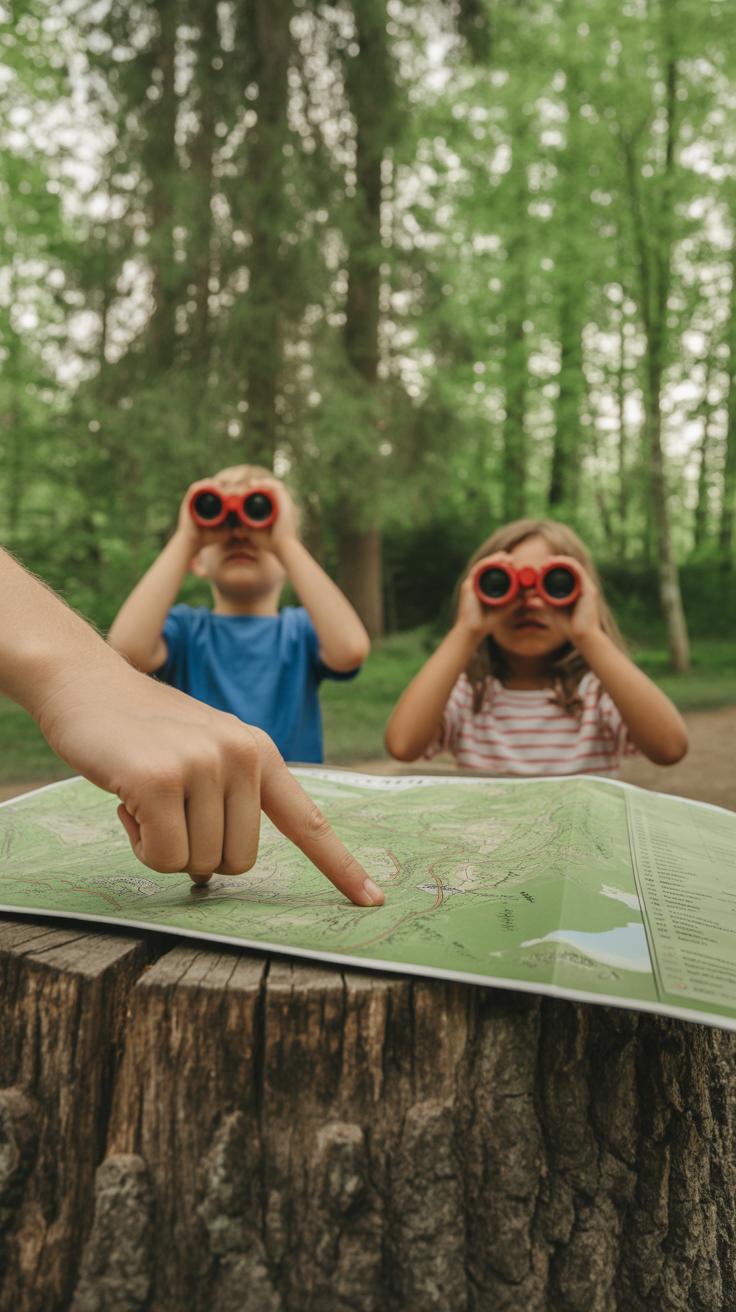
Safety First
Picking where to hold a scavenger hunt in the forest means first looking closely at safety. You want a place that feels secure for kids to roam without constant worry. Check for obvious hazards like steep drop-offs, thick thorny bushes, or areas where poisonous plants might grow. I once took a group to a spot that seemed perfect but realized later that the old fallen trees made the ground slippery and risky.
Look around for clear paths and spots where kids can be easily seen. If you’re unsure about snakes or insects, ask a local park ranger or someone familiar with the area. It’s tempting to pick a wildly natural place, but if it’s too risky, the fun may quickly turn stressful.
Finding a Fun Setting
Once safety feels manageable, think about what makes a forest fascinating for kids. Is there a mix of trees, flowers, maybe a stream nearby? Variety helps keep things interesting. Kids don’t just want to find basic leaves or sticks; they like discovering things that surprise them—a colorful mushroom, a feather, or a cluster of pinecones.
Sometimes smaller woodlands packed with life can be more captivating than huge, empty forests. When choosing your spot, imagine the kinds of clues you could create. Does the area invite exploration? Are there enough different natural elements to spark curiosity? A place I liked well had fallen logs, interesting tree bark, and even small critters, making the hunt diverse enough to keep the kids engaged and guessing.
Creating Engaging Clues for Kids
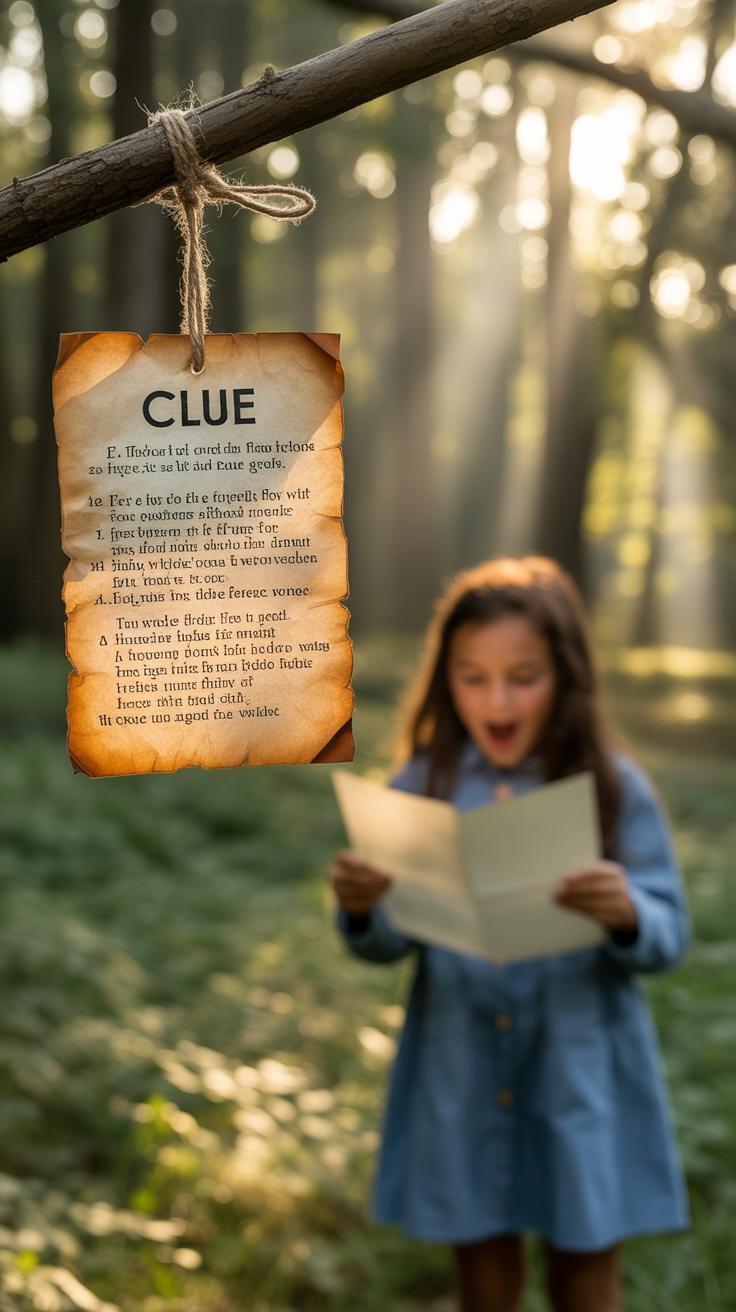
Designing clues for a forest scavenger hunt means finding a balance between clear guidance and a bit of mystery. You want kids to feel challenged, but not frustrated. Keep the language simple and direct, especially for younger children, but don’t shy away from a playful twist that sparks curiosity. Sometimes a clue that’s too obvious can be boring, yet something too tricky might just discourage them. It’s a fine line, and you might find yourself tweaking clues as you test them out.
Types of Clues to Use
Mixing different clue types keeps the hunt interesting. Riddles work well if they’re short and relate directly to something in the forest. For example, “I hum without a voice, I sway but I don’t move my feet” could lead to a bush or leaves in the breeze. Picture clues work wonders, too—kids can match a drawing of a pinecone or a certain leaf shape. Sensory clues bring another level: asking children to find something rough, smooth, or fragrant engages more than just sight. You might even have them listen for a bird call or the sound of running water. These varied clues keep the mind and body active and usually get kids more excited.
Linking Clues to Nature
When clues connect with the forest environment, the scavenger hunt becomes more than just a game—it turns into an adventure in discovery. Pointing out tree bark textures, spotting specific plants, or identifying animal tracks invites kids to observe closely. You can encourage questions like, “Why do you think this tree’s leaves are different from others?” or “Can you feel how cool this moss is compared to the dry leaves?” This approach helps children learn without it feeling like a lesson. The forest itself becomes a huge, interactive classroom—and the clues lead them naturally to notice details they might otherwise miss.
Planning the Hunt Route and Duration
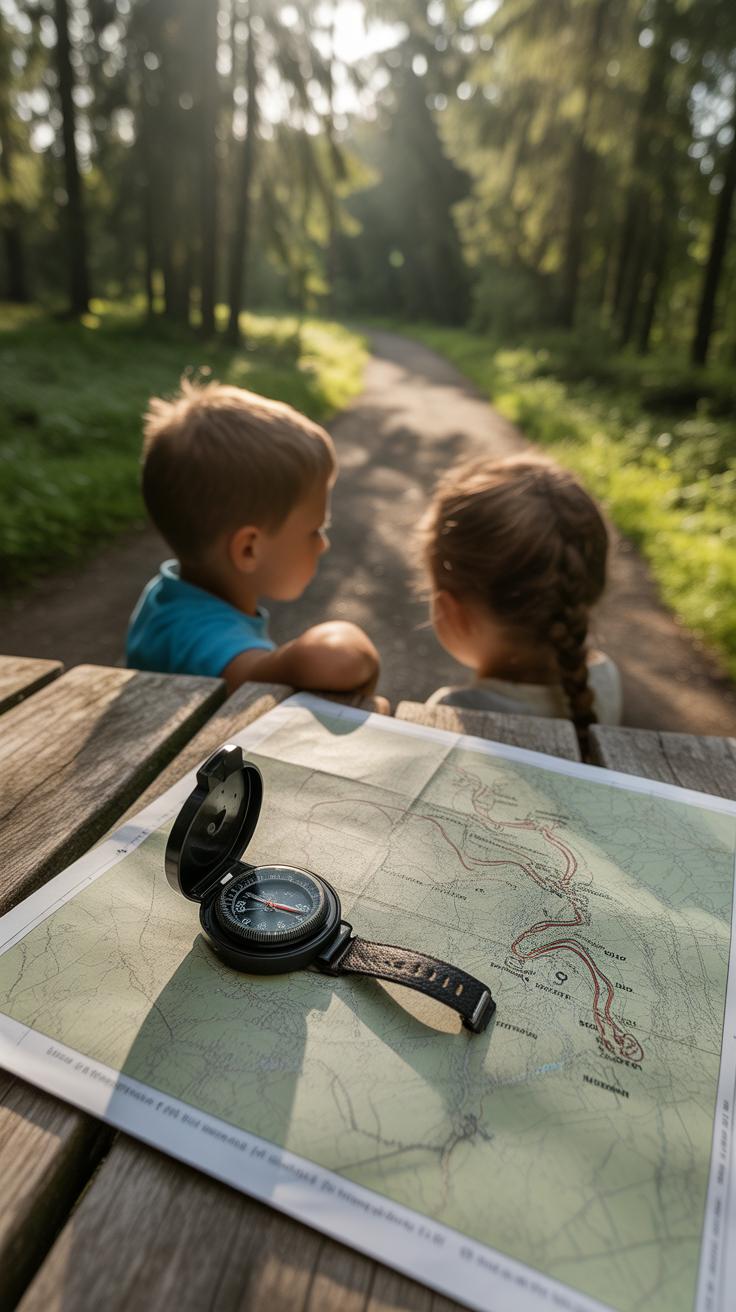
When setting up a scavenger hunt in the forest, thinking about the route and how long it will take is key—especially with kids involved. Their energy and focus can vary quite a bit, so you’ll want to gauge it carefully. For younger children, shorter routes with simple, clear turns work best. It keeps things safe and helps prevent anyone from wandering off or getting overwhelmed. I once tried a circuit with small loops for a group of five-year-olds, and it really held their attention better than I expected.
Timing matters too. For young kids, aim for 15 to 30 minutes tops. Break the route into tiny chunks where they can pause and spot items easily. A few straight stretches and one or two 90-degree turns tend to make navigation straightforward and fun without any stress.
Simple Routes for Young Children
Keep the paths short and easy to follow. Don’t try to squeeze too much into the forest—stick to clear landmarks like a big rock or a familiar tree. These act as natural guides and reduce the chance of confusion. Also, think about paths that loop back or end near the starting spot; it simplifies logistics for parents and helps kids feel secure.
If the weather’s nice, these routes become little adventures where kids stay curious but never lost. You’ll probably notice them asking questions like “Are we almost there?”—that’s your cue to check the pace.
Longer Routes for Older Kids
For older children, you have room to stretch things out a bit. It helps to plan a more varied trail—some uphill sections, maybe crossing a small stream or winding through dense trees. This adds a layer of challenge and makes the hunt feel rewarding rather than repetitive. The distance can go up to a few kilometers, but keep an eye on energy levels during breaks or stops in shaded spots.
Try mixing in a few unexpected turns or forks in the path. It encourages problem-solving and keeps older kids more engaged. Remember, pacing changes here. They might walk steadily for 10 minutes, then sprint ahead chasing a clue, then slow down to examine surroundings. Being flexible in timing is useful because their attention can shift quickly—sometimes they’re laser-focused, other times eager to reach the finish.
Gathering Materials and Preparing the Hunt
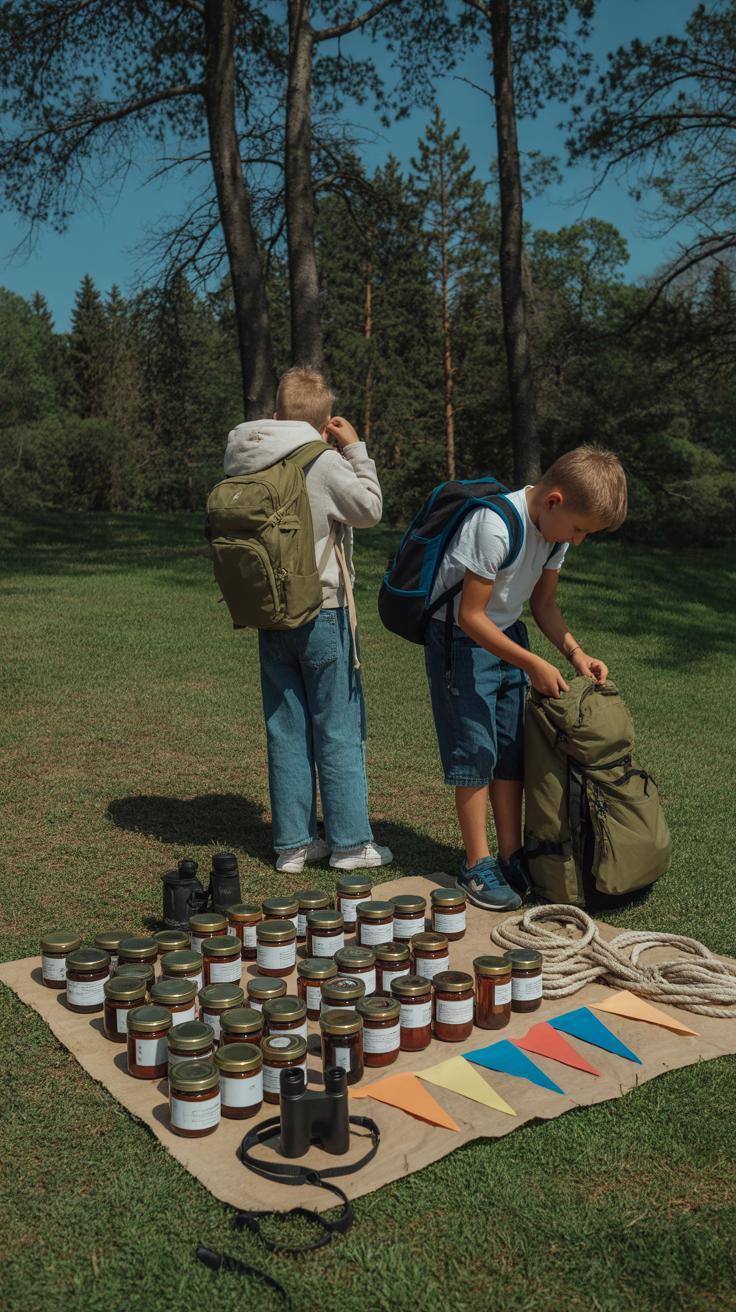
Organizing a forest scavenger hunt means gathering a few key supplies, though you don’t need a lot. Printed clue cards work well—just simple notes or rhymes directing kids where to look next. You might want a little notebook or clipboard for them to jot down or check things off. Some small containers or bags help if you want them to collect natural items like leaves or pinecones, but if you prefer, cameras or smartphones for photos can work too, especially if collecting isn’t allowed.
Maps can be handy, especially if the area is big or unfamiliar. Even a rough sketch of the route adds a bit of adventure—kids like feeling like they’re explorers, after all. Tools like magnifying glasses or small nets can also bring curiosity to life and encourage closer observation of insects or textures.
Setting up beforehand might take a bit of wandering. Place your clues thoughtfully—try hiding them where they’re visible enough not to frustrate, yet still a tiny challenge. Avoid spots that could be tricky or unsafe, especially for younger kids. Double-check the environment for hazards or anything that might shift around, like loose branches. Test the flow once or twice. If you’re leaving items to collect, make sure they’re plentiful enough so groups won’t compete or get stuck.
Sometimes, you’ll find yourself moving clues last minute. Maybe a storm came through or a curious animal rummaged about. Staying flexible and observant during setup saves you from surprises and might spark new ideas you hadn’t thought of before.
Involving Kids in the Scavenger Hunt
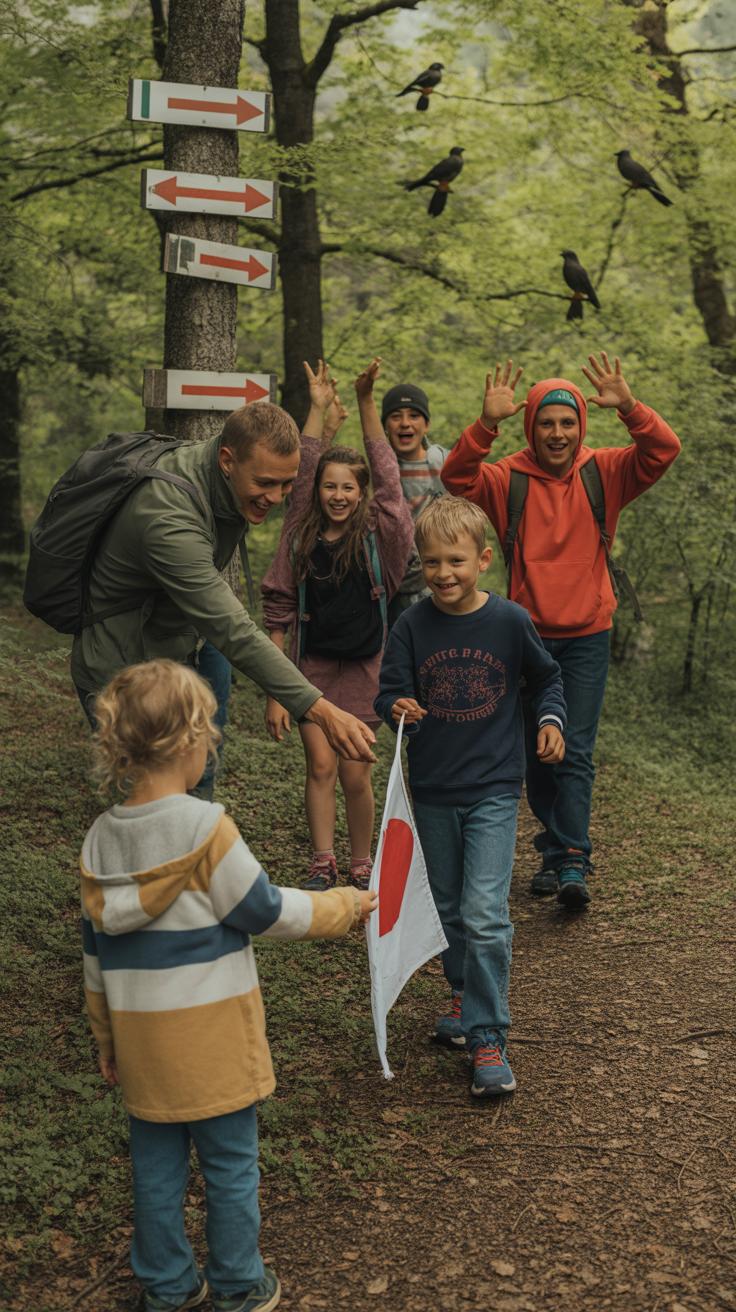
Getting children truly involved during a scavenger hunt means more than just handing them a list. One way to keep them engaged is by encouraging teamwork—this doesn’t mean just splitting kids into groups, though that helps—but also by assigning them different roles that suit their personalities and strengths. For example, some kids might be better at spotting things from a distance, while others excel at writing down clues or managing the collected items.
Try mixing up teams with diverse age groups or skills to spark cooperation naturally. Giving each child a distinct role, like navigator, collector, or recorder, can make the experience feel important and fun for everyone. Sometimes, letting kids suggest their own roles adds a surprising level of enthusiasm and creativity.
To sharpen observation skills, use prompts that require attention to fine details—like finding leaves with unusual shapes, spotting insects camouflaged in the bark, or listening for bird calls. Asking questions such as, “What color is that berry, and how many can you count on this bush?” pushes them to look closer, think deeper. Sometimes I’ve noticed even the quietest kids perk up when they hear these little challenges—they want to prove they see what others might miss.
It’s good to sprinkle in open-ended clues or puzzles that require kids to think critically, like matching a footprint to an animal or figuring out which tree the acorns dropped from. These moments mix curiosity with problem-solving. And as kids work together, you often catch glimpses of them sharing ideas, debating clues, or splitting tasks naturally. It’s a subtle way to build social skills while having fun.
Making the Scavenger Hunt Educational
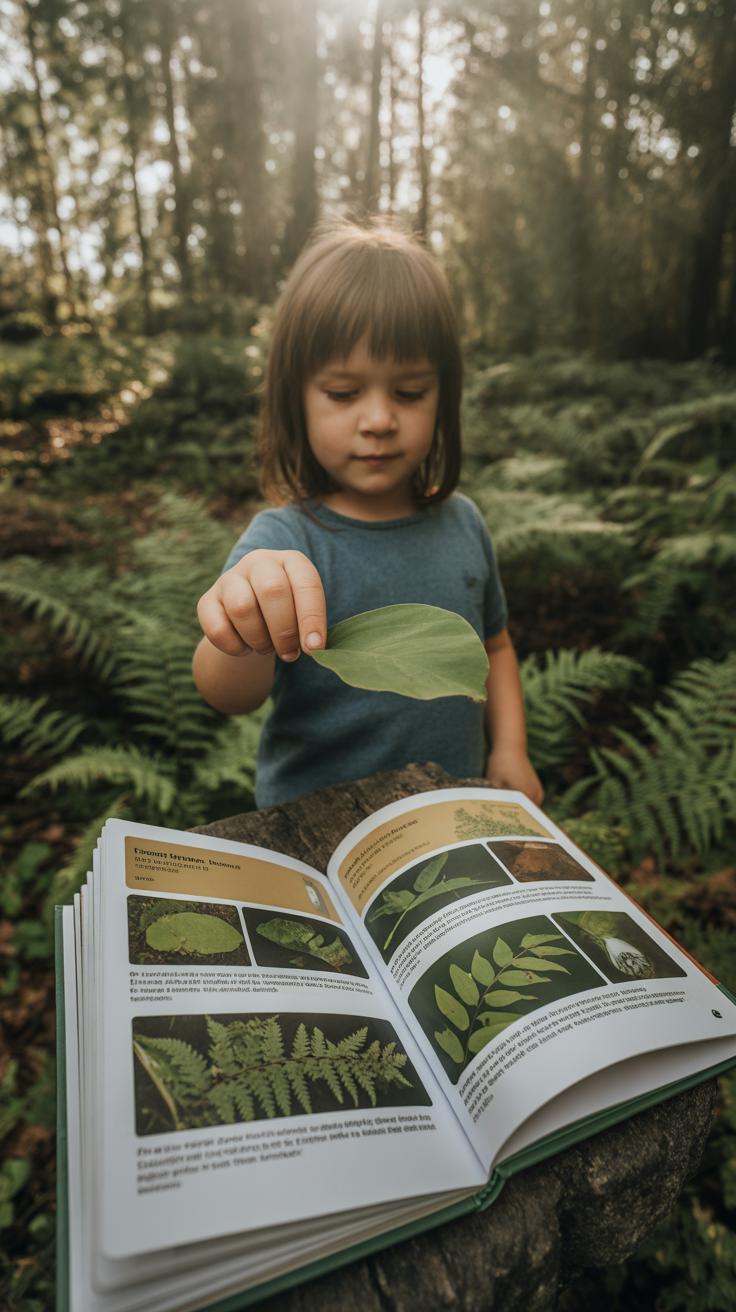
Using a forest scavenger hunt to teach kids about ecology, plants, and animals turns an ordinary game into a richer experience. Instead of just collecting items, you can design clues that reveal little facts about each find. For example, a clue might say, “Find a leaf that’s edible for deer” or “Spot a tree where birds like to nest.” This subtlety makes learning feel like part of the adventure, not a lesson forced upon them.
One trick is to sneak in nature facts directly within the clues. When asking children to find certain objects, include a short note about its role—like how mushrooms help break down dead wood, or how the bark of some trees can show rings that tell its age. These facts encourage kids to pause, think, and connect what they see to the bigger picture of forest life.
To spark curiosity, you might ask open-ended questions during the hunt, such as “Why do you think some plants grow better in shade?” or “What animals do you think live under that log?” These questions don’t have simple answers, which is exactly the point—they invite kids to wonder and observe more closely. Sometimes, leaving a clue that leads to a mystery—like a strangely shaped seed or an odd insect—can turn the search into a mini-discovery mission.
What I like about these educational elements is how they turn a simple game into a series of “aha” moments. Kids start noticing patterns—how plants and animals depend on each other, or how tiny details in the forest tell stories about seasons and survival. It’s fascinating to watch a child get genuinely curious, ask a question, then rush back excited to share what they’ve learned or observed. That kind of engagement goes beyond just finding items—it fuels a deeper appreciation for nature.
Tips for a Successful and Enjoyable Experience
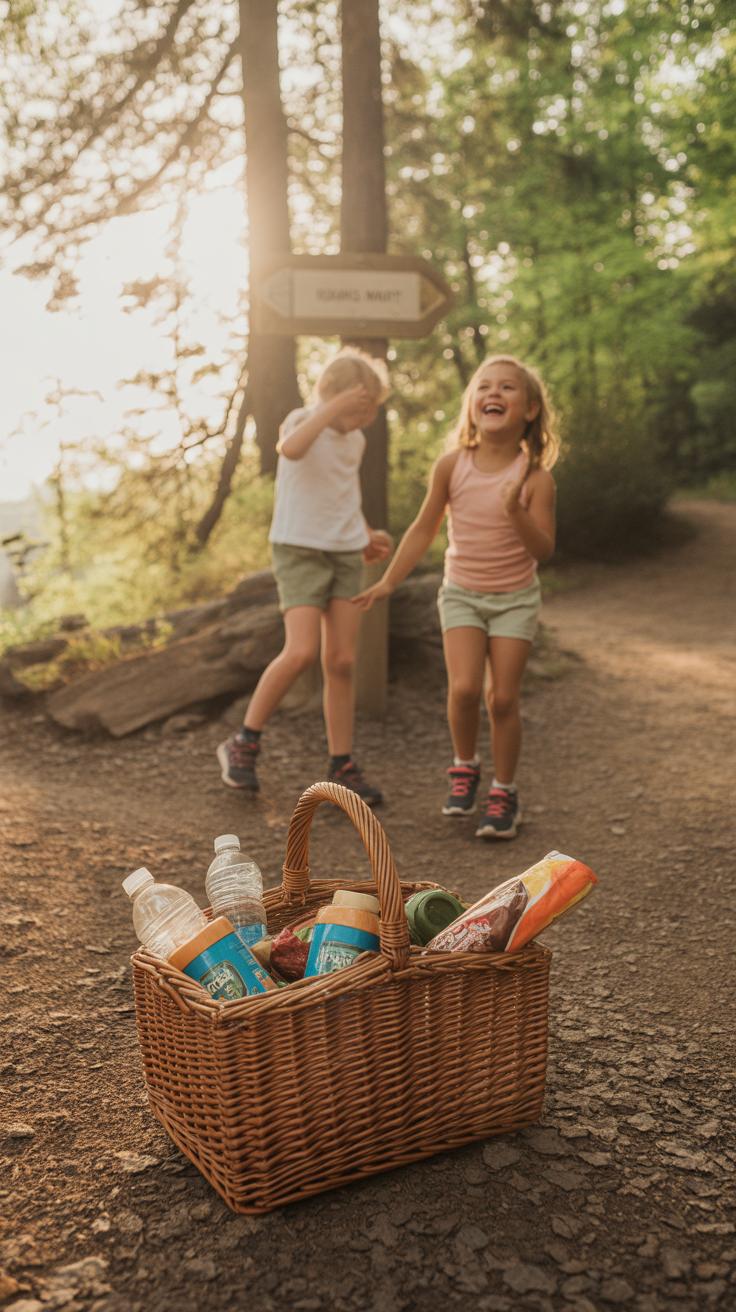
Safety and Supervision
When planning a forest scavenger hunt for kids, safety has to come first, no question about it. Keep a close eye on children during the entire activity, especially if the area has uneven ground, thick bushes, or nearby water. It’s easy to get distracted, so having an adult or older helper assigned to small groups works best. That way, each child gets some attention without feeling overwhelmed by rules.
Setting clear boundaries before starting makes a difference. Let kids know where they can and can’t go. Remind them not to touch anything that looks sharp, slippery, or unfamiliar—sometimes kids get curious about interesting plants or insects, but it’s better to be cautious. You might consider bringing a basic first aid kit, just in case someone scrapes a knee or gets a bite.
One small tip: wear bright clothes. It helps adults spot kids at a quick glance, which can be reassuring for everyone involved. Also, have a check-in system during the hunt—maybe every 15 minutes or so—to make sure everyone stays accounted for. It doesn’t mean micromanaging; just a simple touch base can ease any worries.
Keeping Kids Motivated
Keeping children engaged during a scavenger hunt can be a bit tricky. Some lose interest quickly; others get so caught up in searching they forget to pay attention to instructions. To keep that balance, try mixing up the tasks. Alternate easy finds with slightly harder ones. That way, they get quick wins, but still feel challenged.
Encourage teamwork, even if the hunt is individual—it brings out a sense of camaraderie and shared excitement, which can fuel motivation. Offering small rewards, like stickers or nature badges, can help—but don’t rely on them too much. Sometimes kids just love the thrill of discovery, even if no prize is involved.
Finally, don’t rush the experience. Pausing now and then to talk about what they’ve found or to share a funny moment can keep spirits high. It also gives you an invisible moment of rest. Honestly, I’ve noticed kids perk up after just a short break or some light conversation, so don’t underestimate the power of slowing down a bit.
Conclusions
Outdoor forest clue scavenger hunts provide an ideal mix of physical activity, mental challenge, and fun for children. They help kids connect with nature and enhance skills like observation and teamwork. By creating clear clues and themes, you create memorable experiences that children love returning to again and again.
Planning your scavenger hunt with safety and creativity in mind will lead to successful outdoor adventures. These hunts support children’s healthy development and offer quality time outdoors. Try these ideas to bring exciting forest exploration into your kids’ playtime and watch their excitement and learning grow.


